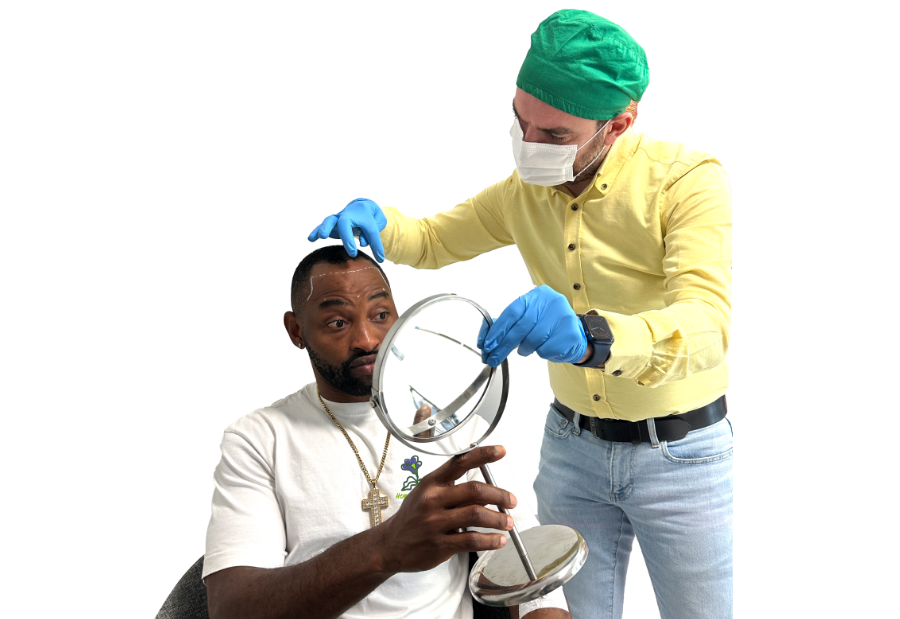Get 25% OFF Hair Transplant Packages This New Year — Book Today!
How to Sleep After Hair Transplant: All the Essential Recommendations

A hair transplant isn’t just about the surgery day. What you do afterward plays a huge role in how good your results look. One of the most overlooked parts of recovery is sleep. People focus so much on washing instructions and medication that they forget that hours spent sleeping can make or break the outcome. Learning how to sleep after a hair transplant is just as important as taking your painkillers or following post-op care.
Good sleep helps your body heal faster, keeps swelling under control, and ensures those tiny grafts stay safe while they settle into place. Getting this right isn’t complicated, but it does take a bit of planning and patience.
Adopting Ideal Positions to Protect Your Grafts
Right after surgery, your scalp is sensitive and the grafts aren’t fully anchored. Sleeping flat on your bed is risky during this period. Most surgeons recommend sleeping in a semi-upright position for at least the first few nights. This means keeping your head elevated by 15 degrees first 2-3 nights before your travel and after 2-3 nights keeping your head elevated by 45 degrees for 1 week.
A lot of patients find a recliner helpful, but if you don’t have one, use two or three pillows stacked behind your head. Some even add small pillows under their back to stop sliding down. This position not only protects the grafts but also helps limit swelling that can otherwise move down to your forehead and eyes.
If you’re wondering how long to sleep with a neck pillow after a hair transplant, the general rule is to keep using it for about a week. It prevents your head from rolling while you sleep, which is crucial during the early days.
Proper post-hair transplant care plays a vital role in ensuring long-lasting results and healthy regrowth. You can read our complete recovery guide here
Positions to Absolutely Avoid
While you’re figuring out how to sleep after a hair transplant, you also need to know which positions to stay away from.
Sleeping on Your Tummy
Sleeping face-down might feel cosy, but it puts direct pressure on the transplanted area. It can rub grafts against the pillow and even cause a few to come out. Plus, this position increases swelling, leaving you with puffy eyes in the morning.
Sleeping on Your Side
Side sleeping is risky in the first week too. The pressure from the pillow can irritate grafts and cause uneven healing. Some people panic when they’ve accidentally slept on their side after a hair transplant, but one slip-up usually won’t ruin the results. Just try to stay on your back for the rest of the night and stick to the position until you’re cleared to switch.
After surgery, many patients are curious about the results of 2000 grafts before and after, which largely depend on proper recovery and care during the initial weeks. Following the right sleeping positions not only protects the grafts but also supports the healing process outlined in our recovery timeline guide
Practical Solutions for Comfortable Sleep
It can be tough to sleep sitting up, especially if you’ve been lying flat or curling into your side. Here’s a list of a few things you can do to make it easier.
Managing Night-time Itching
Mild itching is often a sign of healing, but it can be a pain at night. Keeping your scalp moisturised with the solution your doctor provides will calm the itch. If it gets too bothersome, ask your surgeon about antihistamines for temporary relief.
Pain Management
Tenderness is most noticeable in the first 48 hours. Pain can also make sleep harder to initiate, so take the recommended pain medication, ideally 30 minutes before bed. This gives the medication time to work so you can get uninterrupted sleep.
A Comfortable Environment for Optimal Sleep
Temperature is also an important factor. A slightly cool room can reduce swelling and make you sleep better. Some people even put a clean towel over their pillow in case of mild bleeding or fluid drainage. Those who say they can’t sleep after a hair transplant often benefit from white noise or relaxing music to stay still and drift off more easily.
Precise Schedule for Resuming Positions
It’s normal to want to go back to your favourite sleeping position as soon as possible. But the timing matters.
First Week: Strict Back Position
This is the most important period. Sleep with your head raised and avoid turning to the side. Using a neck pillow sleeping position after a hair transplant can be a game-changer. It keeps you stable through the night.
Second Week: Progressive Introduction of Side Sleeping
At this stage, the grafts usually seem secure. You can start sleeping on your side: just have a soft pillow and avoid pressing too hard against the scalp. If you have been asking yourself when can I sleep on my side after a hair transplant?’ – this is the time when most surgeons give the thumbs up.
Beyond 15 Days: Gradual Return to Normal Positions
After the two-week mark, your risk of dislodging grafts is very low. You can lie flat, turn on your side, or even sleep face-down if you really want to, though most patients find back sleeping more comfortable for a bit longer.
Sleep-related Complications to Monitor
Sometimes issues can occur, even with perfect care. Be on the lookout for unusual pain, any redness that is still spreading, or fluid coming from either the donor area or recipient area. These could be early signs of infection or irritation. Good follow-up care helps solve these problems quickly.
If poor sleep is leaving you tired, mention it during your post-op checkup. The doctor may also suggest a mild sleep aid or tell you which is the best neck pillow after a hair transplant to help make it more tolerable.
While knowing how to sleep post hair transplant might seem like a minor consideration, it is arguably one of the key factors for great outcomes. With proper positioning, a calm sleeping environment, and patience for the first couple of weeks, the grafts should remain in an optimal position for healing. Once you pass the initial healing stage, you will be back to sleeping soundly and not having to worry about damaging your transplant.

